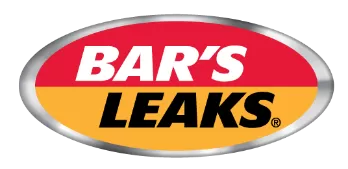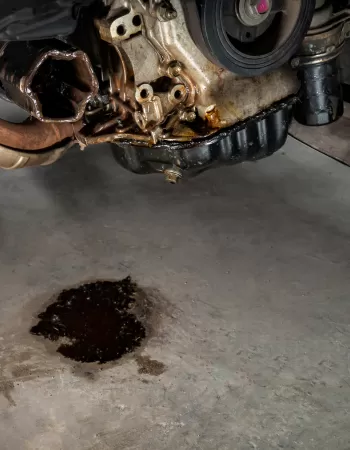Seven Common Transmission Problems and How We Can Help Fix Them
The last thing you want to have to deal with when it comes to your car is a transmission problem. Most of us hear transmission problems and see literal dollar signs flowing out of our wallets to the mechanic or dealership. But not all transmission problems have to mean disaster. Here are some symptoms of transmission problems and what they mean to help you do your own transmission troubleshooting and determine your next steps.
We’ve been around for over 70 years, and have sold millions of units of transmission repair products. We’ve learned a thing or two.
1. Transmission Is Whining and Making Noises
It’s never a good sign when your transmission is making noise, but what does it mean? There are a lot of different sounds that your transmission can make. The most common are whining, buzzing or humming. If you have a problem with a manual transmission, these sounds are often louder, sharper and clunkier. A humming or whining noise in an automatic transmission vehicle often means that you are low on automatic transmission fluid. If this is the case, you want to refill that fluid immediately. Transmission fluid reduces friction, which means heat, which in turn is bad news for transmissions.
When you’re adding transmission fluid, you should also consider putting in an additive that stops transmission fluid leaks, both present and future. Transmission fluid does not burn off like oil, so if you are low on transmission fluid, you have a blown or worn seal or a leak somewhere in the system, which means it will happen again.
A clunking noise could be the sign of a more serious problem, like a part of the transmission system has worn out or failed.
2. Transmission Is Not Engaging
If you have a manual transmission car that does not shift gears once you press the clutch and position the gearshift, your clutch fluid may be the issue. Your hydraulic clutch system works by generating pressure through fluid to allow the cylinders to move the car from one gear to another. If gears are not shifting, it could be because there is air in the system preventing the clutch from delivering enough pressure to shift the gears properly.
If this is the problem, the solution may be to bleed the clutch. Bleeding the clutch means releasing a little of the clutch fluid at a time through the bleeder valve with the idea of releasing trapped air as well. Once you have released all the air, replacing the fluid as you go, your clutch should re-engage. Be sure to refill with a stop-leak clutch fluid as, again, the cause of air in the system is probably a leak somewhere.
3. Transmission Is Slipping
A slipping transmission is one of the most serious problems you can have with your transmission. It means that your car cannot be relied upon to stay in gear. That is to say, you could be driving and suddenly find your car slowing down as the car spontaneously shifts into neutral. If this were to happen on the highway, it could have serious consequences. It also probably means that something connecting the gears in your transmission is broken.
If your transmission is slipping, you can try putting in an anti-slipping additive, but you should only test its efficacy in an empty parking lot, your driveway or other area where a sudden loss of speed will not endanger you or anyone around. If it is successful beyond the number of miles of driving where you normally experience slipping, it usually means the additive has helped revitalize a part that was not broken but merely worn down, and you should be more comfortable postponing a visit to the mechanic. If the additive is not successful, take your vehicle in for repair right away.
4. Transmission Is Leaking Fluid
If the first sign that you have a transmission problem is that your transmission is leaking fluid, you’re in luck, because you can resolve the problem before you run into more serious transmission problems. Your transmission fluid is what lubricates the transmission and prevents damaging friction, so you need to have the full recommended transmission fluid level in your car at all times.
If you see fluid leaking from your car, put a white piece of paper underneath the leak. If the fluid that is leaking is bright red, it is almost certainly your transmission fluid that is leaking. If it is black, you probably have an oil leak, and another color like blue or green is usually something like antifreeze or washer fluid.
If your transmission is leaking fluid and you have no other symptoms, the solution is simple. Refill your transmission fluid, including a Bar’s Leaks stop-leak transmission additive to recondition seals and plug up leaks so that you do not continue to leak fluid. If you continue to experience leaking after using the additive, you may have a bigger problem that requires a mechanic.
If the fluid that is leaking is not bright red but dark red and possibly smells burnt, the fluid you are currently using is compromised, and you will need to fully drain the fluid and refill the tank completely with fresh transmission fluid and anti-leak additive. You may also want to consider flushing the system to clear it of any contaminants before adding the new liquid.
5. Transmission Smells Like It’s Burning
What happens if you detect a burning smell when you are driving? Even if nothing else seems to be wrong and the car itself is not overheating, a burning smell coming from your car is a cause for concern. It often means that your transmission fluid is overheating (which can lead to that dark red or brown color mentioned above).
If your transmission fluid is overheating, you will run into similar problems to what you may experience when your fluid is low. Parts are not properly lubricated, there is an increase in friction, and the transmission will damage itself and eventually seize up, which often results in a prohibitively expensive repair.
This problem is often caused by using sub-par transmission fluid or because of a low fluid levels. The first solution to try is the same as above — flush the system and add quality transmission fluid with a Bar’s Leaks transmission stop-leak product.
6. Check-Engine Light Is On
Your check-engine light can go on for any number of reasons, some of which may be related to your transmission and some of which may not be. The typical response to a check engine light is to take the car to a mechanic so they can tell you what is wrong with it.
However, if the goal is to avoid a trip to the mechanic, if possible, you can purchase a diagnostic scan tool, and plug it into your instrument panel. This will give you a diagnostic trouble code that you can look up to see if it is the transmission causing the warning light or some other system. You can then choose your next steps according to what you find.
7. Clutch Is Dragging
If you have a dragging clutch, meaning you struggle to shift gears and there is a grinding noise when you do, you have a dragging clutch, which means the clutch disk is not able to disengage the flywheel when you press the clutch in. This is usually caused by too much slack in the clutch pedal and it is a relatively inexpensive repair, so you can go ahead and bring this one into the mechanic to be dealt with.
How To Prevent Common Transmission Problems
 If you’ve got an older car and you discover you have a transmission problem, you may immediately be thinking about sending that car to the scrapyard — and with good reason. A transmission rebuild or replacement can cost thousands of dollars. But, depending upon your transmission problem, the mechanic doesn’t have to be your first stop. A surprising number of transmission issues, at least in the short term, are ones you can resolve yourself with the right products.
If you’ve got an older car and you discover you have a transmission problem, you may immediately be thinking about sending that car to the scrapyard — and with good reason. A transmission rebuild or replacement can cost thousands of dollars. But, depending upon your transmission problem, the mechanic doesn’t have to be your first stop. A surprising number of transmission issues, at least in the short term, are ones you can resolve yourself with the right products.
If there’s anything that’s closest to a miracle cure-all for car transmissions, it’s Bar’s Leaks Super Transmission Fix. This advanced, innovative product is the result of over 18 month of research and testing, and it can handle more common transmission problems than you might expect. It could even save your car from the junkyard ans save you from a prohibitively high mechanic bill.
Because this product is the most advanced transmission product we’ve ever made, Bar’s Leaks Super Transmission Fix works on all transmissions, from automatic to manual to CVT (continuously variable transmission) and DCT (dual clutch transmission). It stops leaks, helps prevent slipping, can resolve hard shifting and jerking and more. Many of the problems listed above can be resolved for quite some time with proper application of this formula. Before letting yourself get hit by a repair bill, you should definitely give this product a shot. It’s one of our newest formulations and has quickly become our top-selling transmission product ever.
If you’re not sure where to find Bar’s Leaks Super Transmission Fix near you, just look it up on this convenient locator page. And for more information about Bar’s Leaks products for stopping leaks and improving performance for your clutch, engine, coolant system, power steering or transmission, contact Bar’s Leaks directly. We’re happy to help.




